- How polygons are handled internally
- The five basic polygonal API classes
- Construction History and Tweaks
- polyModifierCmd example
- splitUVCmd example
- Poly exporter plug-ins
用来存储polygon(faces,edges,vertices)等部分的基本数据结构,这些数据结构然后被封装到polygonal shape nodes,这些节点构成maya的基本结构——dependency graph。
Polygon components:
polygon Mesh 由三种基本的component组成:
1. Vertices
2. Edges:
3. Faces:
在这三种基础的polygon components之上还有2中附加的component:
5. Face-Vertices
6. UVs
每一个polygon mesh的vertices存储在一个数组中,数组的每一项为一个三维的浮点数指针,每一项对应一个vertexId,这个vertexId基于数组的index,edges和faces的索引都是基于这一个数组的索引。
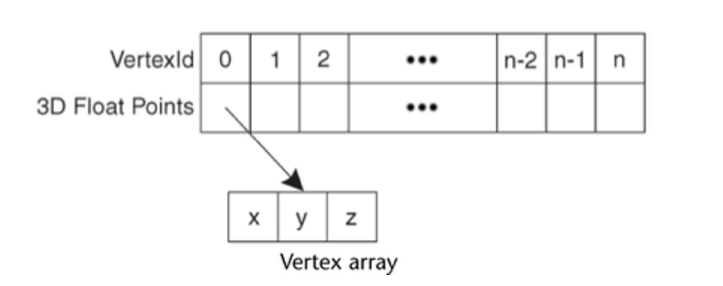
边索引:polygon mesh的边存储在边数组中,每一条边由2个顶点组成,所以边数组的每一项为一个指向边结构的指针。边结构第一项的integer指向start vertex在顶点数组中的vertexId,第二项指向end vertex在顶点数组的顶点数组中的vertexId:
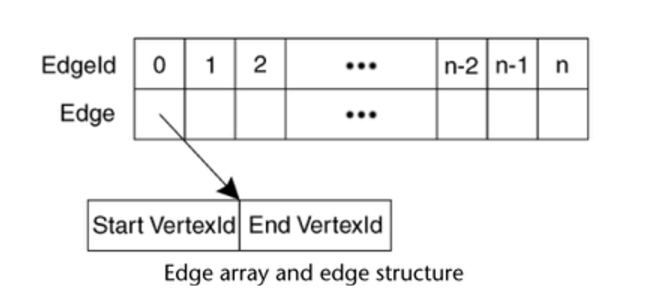
面数组:
polygonal mesh的面也全部被存储在一个数组中,每一个面被描述为一个整数序列,每一个整数代表一个edge的ID,所以它是基于边表上的。
第一个序列代表一个面的包围边,接下来的子序列代表了面当中所有的holes。
internal flags 标志了每个序列的起止。
(1)face array:
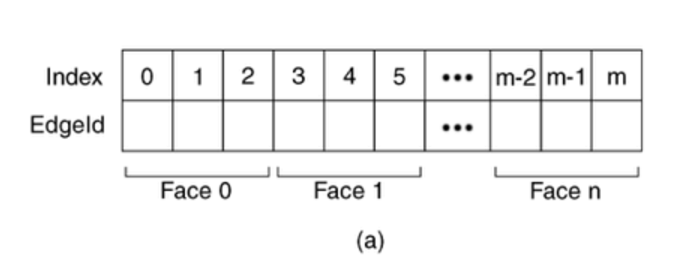
(2)face index array(face offset array):

face-vertices:
相邻的面共享一些顶点,通常你需要对应于某一个面的顶点,从而与同样的处于另一个面的同一个顶点进行区分,这就是face-vertices。
face-vertices是conceptual components,用来定义polygonal的特性(feature),例如color per vertex和UVs。face-vertices由face array和face index array来表示,每一个face-vertices由一个faceid和一个vertexid共同构成
可以有faceid在face array中找到edges,然后每个edgeid的start vertex就是由verticesid来对应的。
例子:

因而face array可以变为:
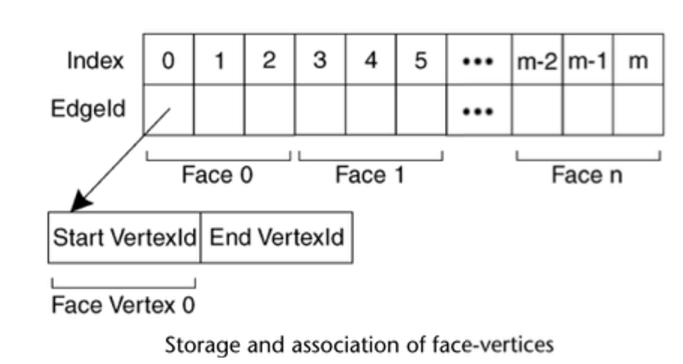
UVs:
UVs依赖于face-vertices的概念,UVs对应于2D的平面用来将texture映射到polygon surface上,The structure that holds UVs in Maya consists of two arrays:
- A UV index array that uses the exact same indices of the face array (visualized as a face vertex array).
- A UV array that holds a list of UV points indexed by UVIds.
The first array associates each face vertex with a given UVId or none at all if the face that the face-vertex belongs to is not mapped. Each UVId then corresponds to an index in the UV list that holds the 2D point (U and V float values) where the UV is situated on the UV space.:
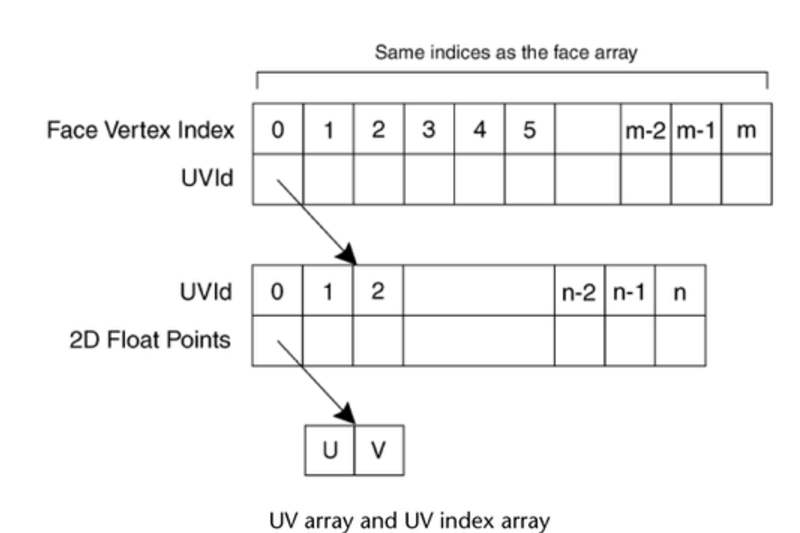
The Polygonal shape node:
用来表示一个mesh,对应maya中的一个DG,The polygonal shape node holds four fundamental attributes: an inMesh, an outMesh, a cachedInMesh, and pnts (tweaks), as shown in the following illustration.
